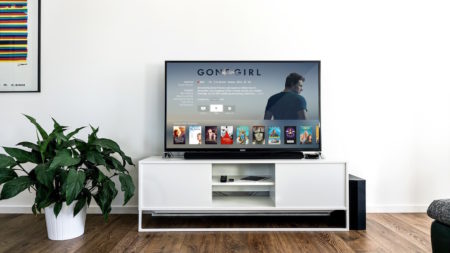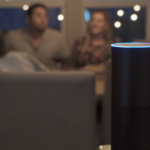Riddle us this—when was the last time you listened to a cassette tape, or watched a LaserDisc?

If you’re like these kids, you may not even know what these things are. Well, lucky for you our blog this time around isn’t about introducing our new Vintage Installation package. Rather, we’re going to be taking a look at the rise of subscription TV services, how they are quickly becoming the go to for in-home entertainment, and what this looks like for cable and satellite moving forward.
So which will prevail? Are we going to one day be watching a group of children a few generations away trying to hook up an old cable box and tune into that one channel that shows all the other channels, or will we still be running cords through walls ourselves to watch our favorite programs? The answers to those questions greatly depends on you the customer and what you’re looking for, as well as the amount of devices you own.
The Rise of Subscription TV
Subscription TV services (AppleTV, Amazon Fire TV, Roku, etc.), or “cord-cutting” services as they’re known, are rapidly on the rise, and are only going to grow. Forbes wrote a great piece on this trend, and here’s what they found that has made subscription TV grow in popularity:
- Compelling and original content from streaming services have sent customers to subscription services, with access across devices.
- HBO launched HBO Now as a standalone service; no cable subscription required, and other cable channels are following suit.
- The amount of people who own a tablet, laptop, and smartphone has increased by 270% since 2010, and with that, comes better access to subscription TV.
- Because of this access, the balance of power between the provider and consumer has shifted towards the consumer, with Millennials leading the way.
While cable is still the dominant provider of entertainment for most customers now, their subscription rates have dropped dramatically. According to one source, four times as many subscribers canceled their pay TV services in 2015, as compared to 2014. And in just one quarter of 2016, pay TV subscriptions fell by a record number 812,000! While these are staggering numbers, most experts say that with the rise of subscription TV services will come an increased need for broadband internet connections. So these cable companies aren’t going anywhere anytime soon.
In addition to their internet connection services, many cable companies are already adapting to this trend. For example, the big names, like Cox and Comcast, already provide On Demand services and mobile streaming services. And Comcast has recently added Netflix to their X1 platform.
Given the trends, there is no doubt that the demand for subscription TV services will only continue to rise. Since so many Millennials are using these services, it follows that future generations will more fully embrace streaming their favorite TV shows and movies. Even if you’re not of this technologically “disruptive” generation, the numbers of Gen Xers and Baby Boomers cutting the cord is growing substantially as well.
Want to embrace the future and get a subscription TV service? Check out our next blog, where we’ll have the breakdown you need to decide, and how it best fits in with your li
festyle, your devices, and perhaps even your Valley Home Theater installed Smart Home.

















